GEORGIA
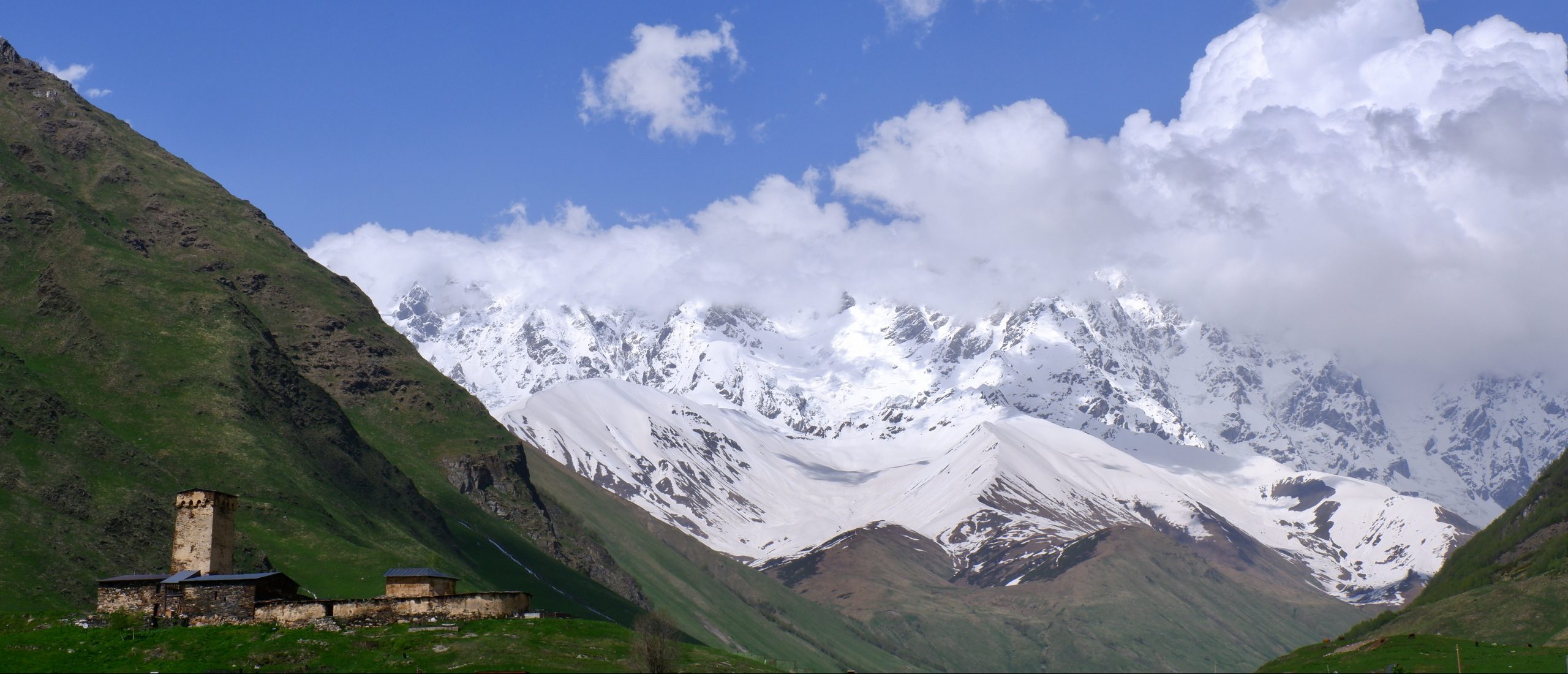
Such a small country – and so much history and current events! Visited by myself for the first time in 2008, I know of no other country that has changed so much in only 15 years. While in 2008 it was still a rarely visited country with little tourist infrastructure, today it is well organised and easy to travel. It was also quite run down then – and today so much investment has been made that some places (especially Batumi) are hardly recognisable.
With less than 60,000 square kilometres, Georgia is smaller than Bavaria. With less than 4 million inhabitants, it is also much more sparsely populated (Bavaria has over 13 million). These figures apply to Georgia without Abkhazia and South Ossetia – two disputed territories since the Georgian war in 2008. For travellers, these territories do not play a role in a certain sense, but in Georgia one may encounter this topic in the form of refugees and certainly in the form of public maps (e.g. many house numbers in Tskhaltubo are on outlines of Georgia including these territories), slogans, conversations.
Georgia is a post-Soviet state that has been independent since 1991. Since then, political events have been dynamic and eventful. Dealing with the memory of Josef Stalin, who was born in Georgia, is also an issue. Georgia has been trying to join the EU for many many years – but is also attached to Russia. Politics is definitely a topic on a trip to Georgia – and a good opportunity to broaden one’s own knowledge.
Apart from these topics, Georgia simply offers travellers many moments of enjoyment in many directions. With the Greater Caucasus in the north (the highest mountain is the Shchara at 5,201 m) and the Lesser in the south, as well as the Black Sea in the west and a broad fertile hilly plain in the middle, Georgia offers a great variety of landscapes. Canyons, caves and lakes enrich the scenic diversity. Georgia also has a lot to offer in terms of history – whether it is the large old town of Tbilisi, old (cave) monasteries and churches, the spa town of Borjomi with a great past or the traditional villages of Sivan and Tusheti, the choice is wide! UrbEx excursions, the old army road, wine tastings, Georgian dance, Georgian cuisine and other attractions enrich the travel offer.
You get along very well with the people. Although very little English is spoken outside Tbilisi (Russian, on the other hand, is widely spoken), people make an effort to understand and communicate. We definitely recommend an interpreter to accompany you.
Georgia is an extremely interesting destination that is suitable for several trips. You can set different priorities and combine areas. There is much to discover and experience – let’s go!
Who should travel to Georgia?
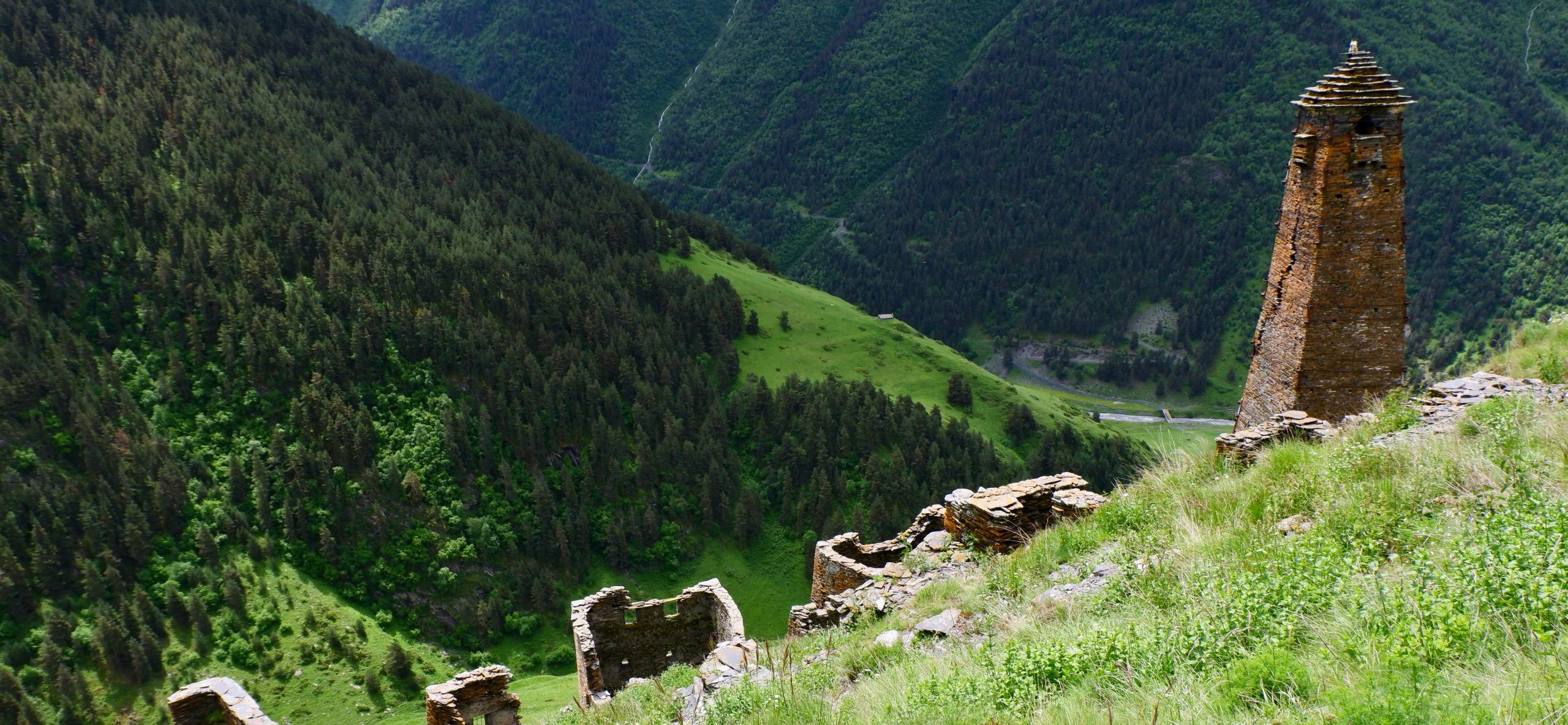
- History and politics buffs
- Mountain and hiking freaks
- Riding enthusiasts
- Culture explorers
- Observers of post-Soviet developments
- Diversity enthusiasts
- UrbEx fans
- The ones unwilling to travel long distances
Accommodation
From 5-star hotels to simple guesthouses, Georgia offers a good selection of rooms. Even the simplest accommodation offers the best cleanliness with fresh bed linen and towels provided. In the countryside, in the absence of restaurants, you are often fed directly in the accommodation – a varied, fresh, rich and delicious food selection always spreads on the table.
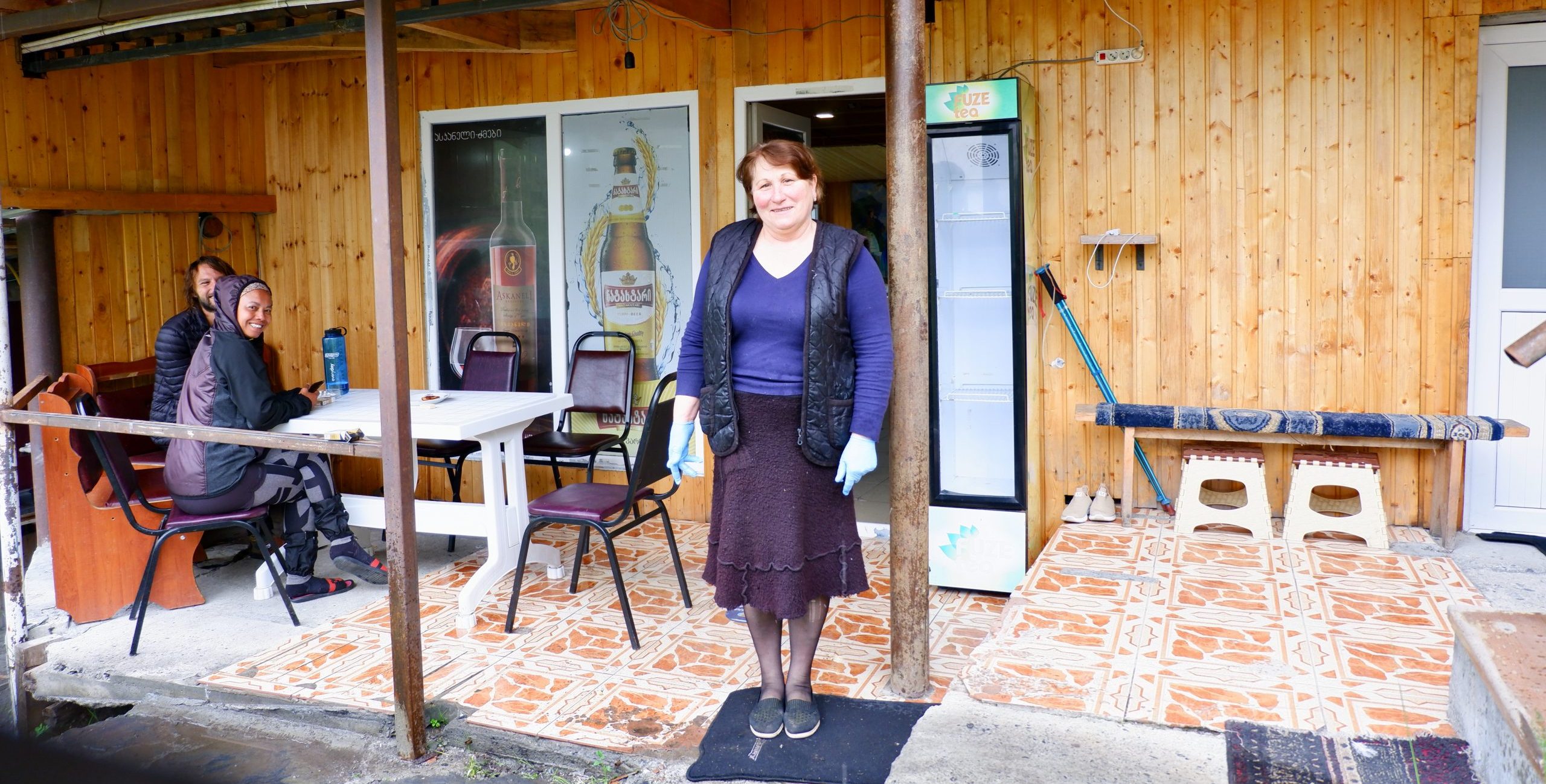
Hiking, Trekking and Mountaineering
The hiking possibilities in Georgia are countless! In addition to short or long day hikes, treks lasting several days with overnight stays in guesthouses, shelters or tents, there are also opportunities for mountain climbing, such as on Mt. Kazbek. In the Greater Caucasus, Svanetia, Kazbegi, Rakha, Tusheti, Khevsureti and Lagodekhi in the far east are the well-known areas. There are few easy-to-walk connections between them, so if you want to change, you usually have to go back to the plains. But maybe one area is enough for one trip? In any case, they offer different tours in terms of length, gradients, days and popularity.
In the south, the Borjomi National Park entices with various hiking possibilities and overnight stays in simple huts. The Javakheti region is a fascinating high plateau and still little developed, but perhaps all the more worthwhile for it. The Didi Abuli peak is strenuous, but also something very special.
You either walk on your two legs – or the four legs of the horse are active. It is better if you have riding experience. Without, a day hike might be a good start. When staying overnight in tents, the horses can carry the luggage. On guesthouse treks you usually carry your own backpack. As the accommodation provides fresh bed linen and towels, you don’t need much in your backpack.
Multi-day treks to higher altitudes are usually possible from around mid-May to the end of September. However, day hikes and tours in the south can also be arranged before and after that – right up to snowshoe hikes in winter. Tell us what your hiking heart desires – and we will make suitable suggestions!
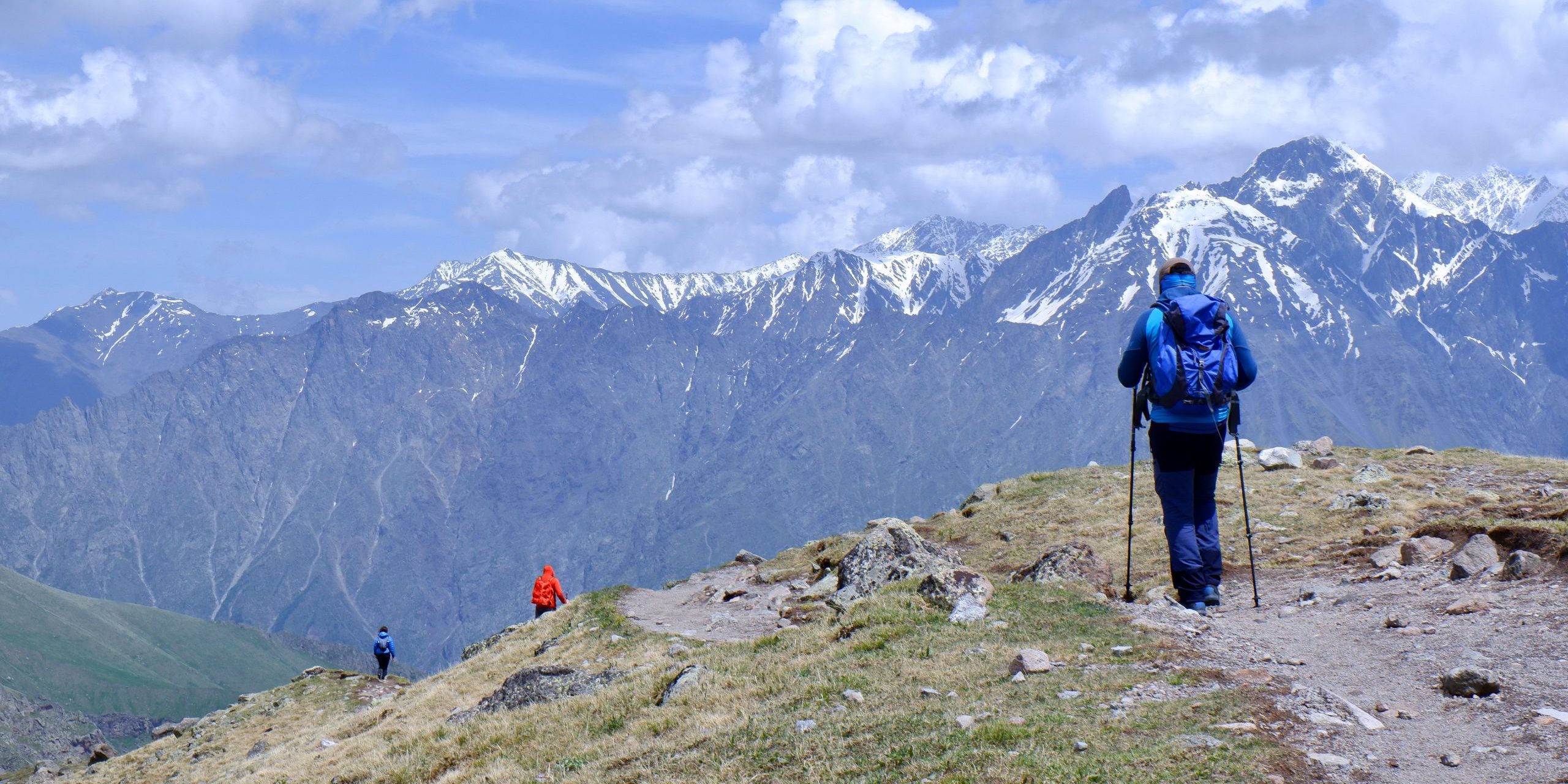
Activities
Those who are not so keen on travelling on two or four (horse)legs, but still want to be active in nature, can go on bicycle tours, river rafting, kayaking or canoeing – or in winter time, snowshoeing and skiing! Gudauri has pistes, but also good ski tours off them. Parasailing is offered in the Black Sea and paragliding in the Kazbegi mountain region.
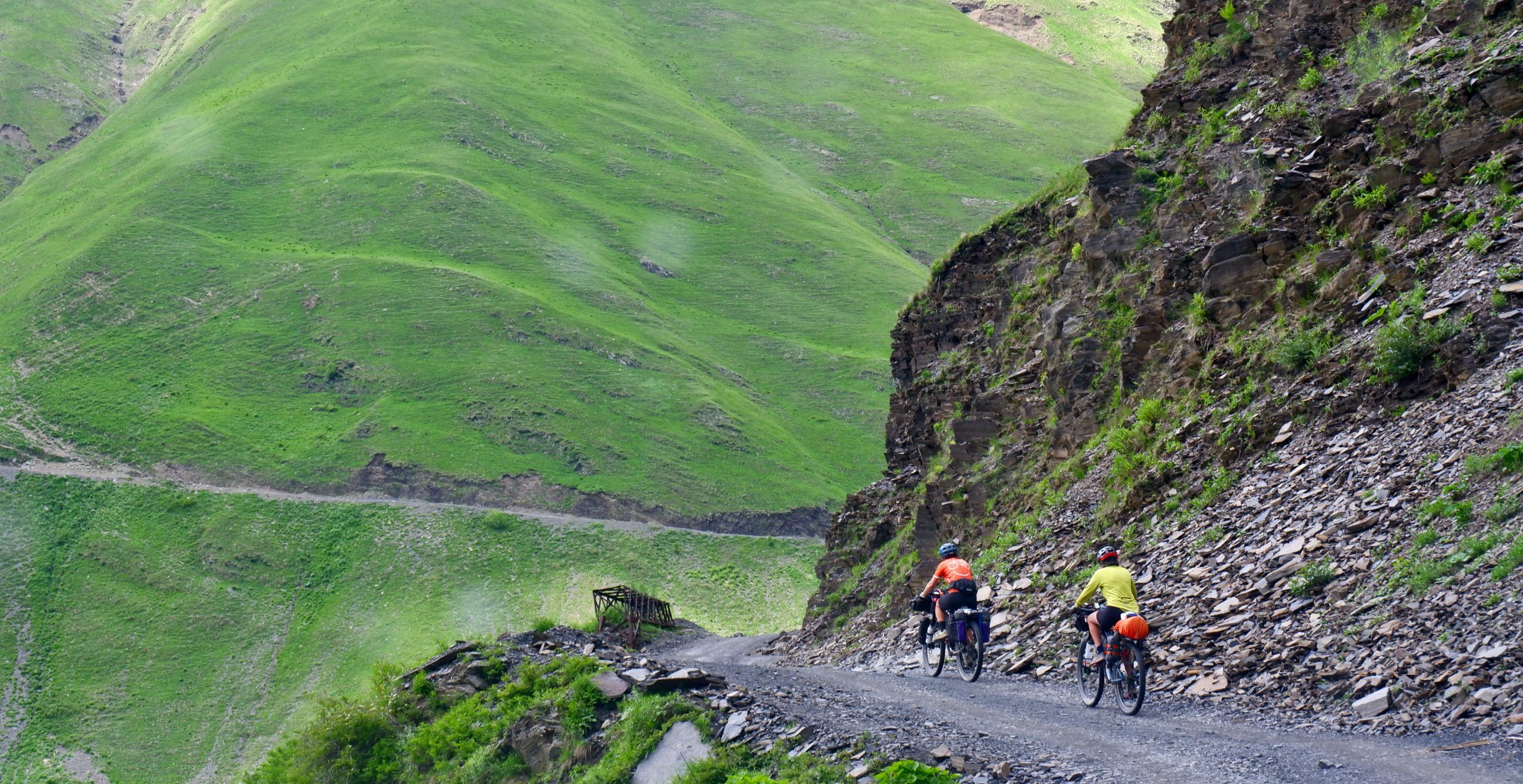
Monasteries, Churches and Religion
Although Georgia’s churches are not as impressive as those in neighbouring Armenia, they are still worth seeing. Georgia is dominated by the Georgian Orthodox Church. There are traces of Christian communities as early as the 1st – 3rd century. Christianity received a major boost when it became better known through Saint Nino and was appointed the state religion in East Georgia. During the Soviet era, the church was strongly opposed and its activities were restricted. Since independence, however, the Church has been strengthening again and influencing public and private life. The Orthodox Church in Georgia enjoys constitutional status, tax exemption and receives state subsidies.
Relics from past times have been preserved and one can visit old cave monasteries such as Wardzia and David Garedscha. The most beautifully situated and most photographed is the Gergeti Church in Kazbegi – but there are numerous other churches, monasteries and fortresses with churches that can be visited.
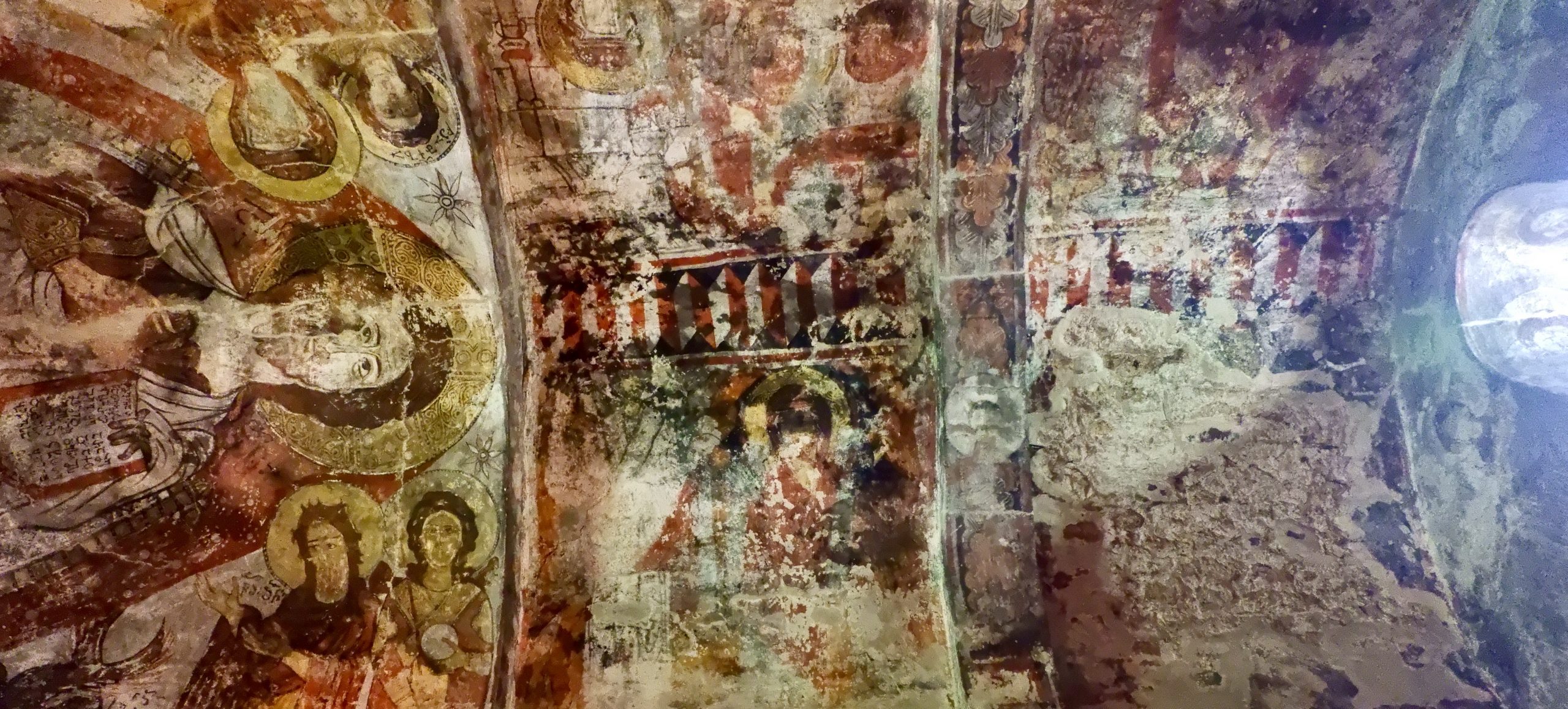
Villages
A trip to Georgia would not be “complete” without village visits. Especially the villages of Swantia with the highlight Ushguli, which has received UNESCO status, are very picturesque with their fortified towers. But also villages in Tusheti and all other regions invite you to stay. In many mountain regions, there is little Soviet influence in the villages, but in the plains it looks a little different. Nevertheless, this is a good reason to take a look around. The villages are a good contrast to the bustling city life – and if you stay more than one trekking night, you have the chance to get to know village life and the villagers a little better.
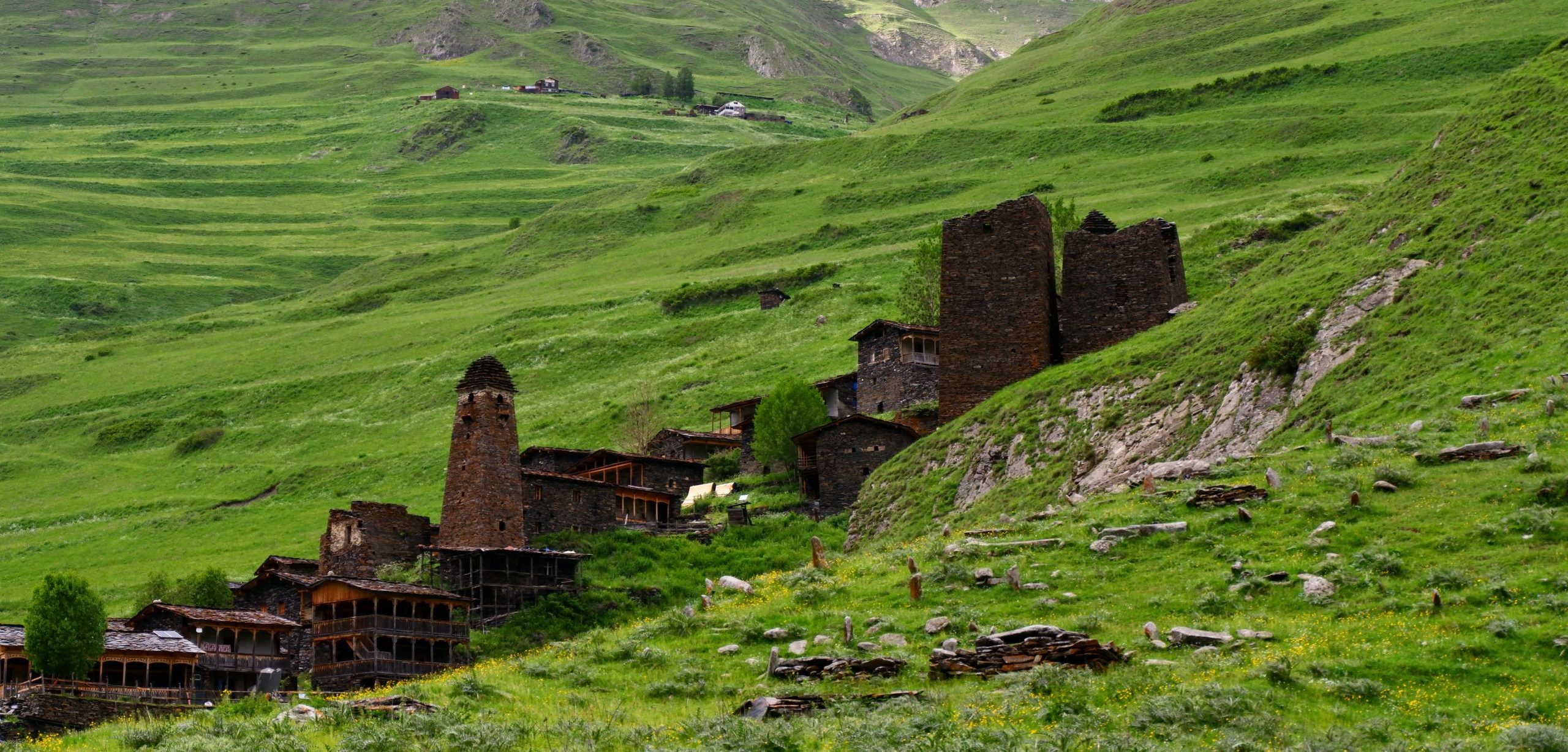
History
There are many things to visit in Georgia that are of historical interest. These include the cave town of Uplisziche from pre-Christian times, the old cave monastery complex in Vardzia from the 12th/13th century and various old churches and monasteries dating back to the 5th century.
In addition to these very old historical legacies, there are also interesting things from the Soviet era – especially, of course, the Stalin Museum in Gori (and his specially prepared birthplace). The relationship of Georgians to Josef Stalin, who was born in Georgia, is not an easy one and thus a good opportunity to draw one’s own conclusions.
We also want to mention the Georgian Army Road, the only land connection between Russia and Georgia, which has been used by traders and soldiers since at least the 1st century. It impresses with its scenic beauty, but it is also interesting to see which cars and lorries drive here nowadays.
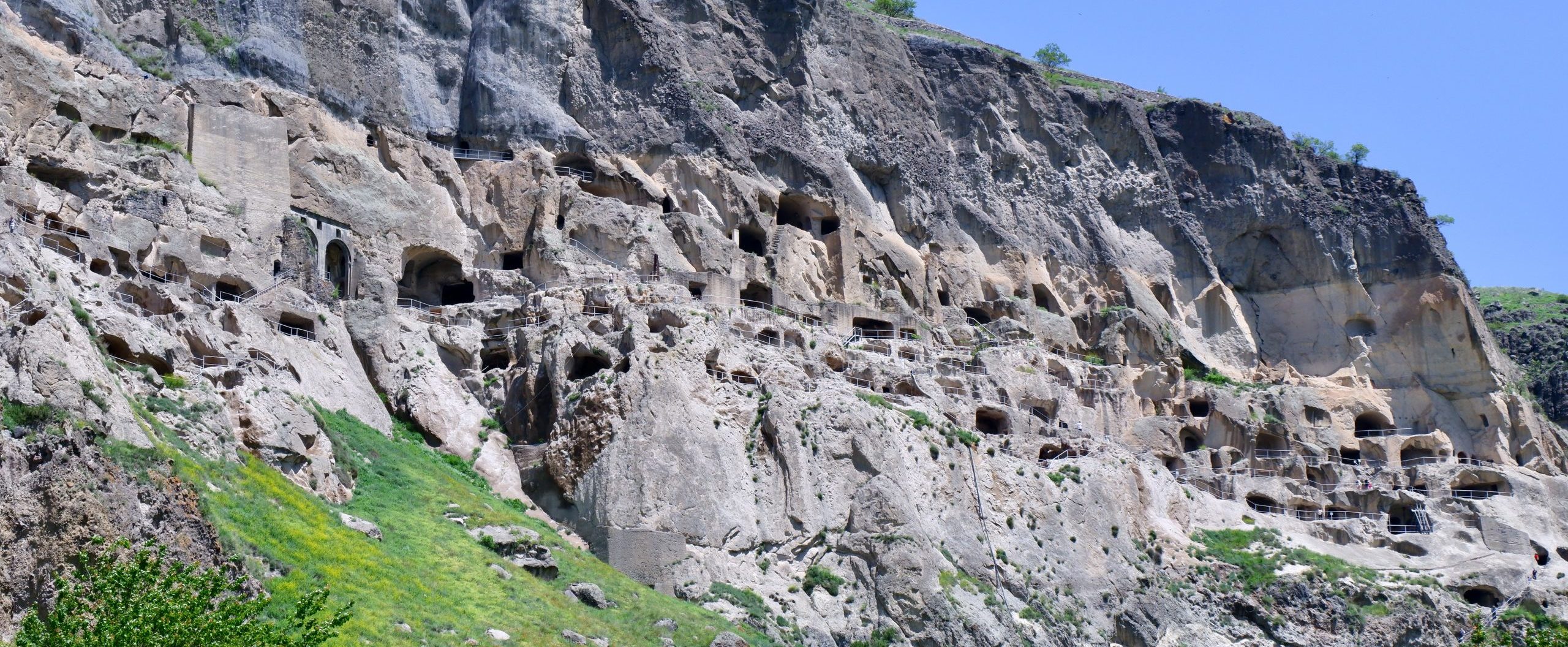
UrbEx
UrbEx is the abbreviation for Urban Exploration, i.e. you explore/discover abandoned buildings in public space. Georgia has quite a lot of these, even in the capital Tbilisi there are apartment buildings where nobody lives anymore. After the collapse of the Soviet Union, many paths of the Russians collapsed – especially the state-imposed recreational stays in sanatoriums, of which Georgia had quite a few to offer. What remained were decaying spas, especially in Tskaltubo. Here, however, some haste is called for: the government and investors are planning major renovations and refurbishments and have already fenced off several buildings. A day trip from Kutaisi or even an overnight stay directly on site is recommended.
Another interesting place is Chiatura, an old mining town (manganese ore). However, the once flourishing mining industry collapsed with the break-up of the Soviet Union and was never renewed to the same extent and so only very few mines are still in operation. Cable cars were a great achievement at the time. In the meantime, much has fallen into disrepair and there are plans to restore the site as a place of remembrance. In any case, it’s a good place to go exploring! The place is also easy to reach in a day trip from Kutaisi.
In addition to these UrbExen centres, there are also a few other abandoned buildings from the old Soviet times – we would be happy to integrate a focus on this in your tour plan!
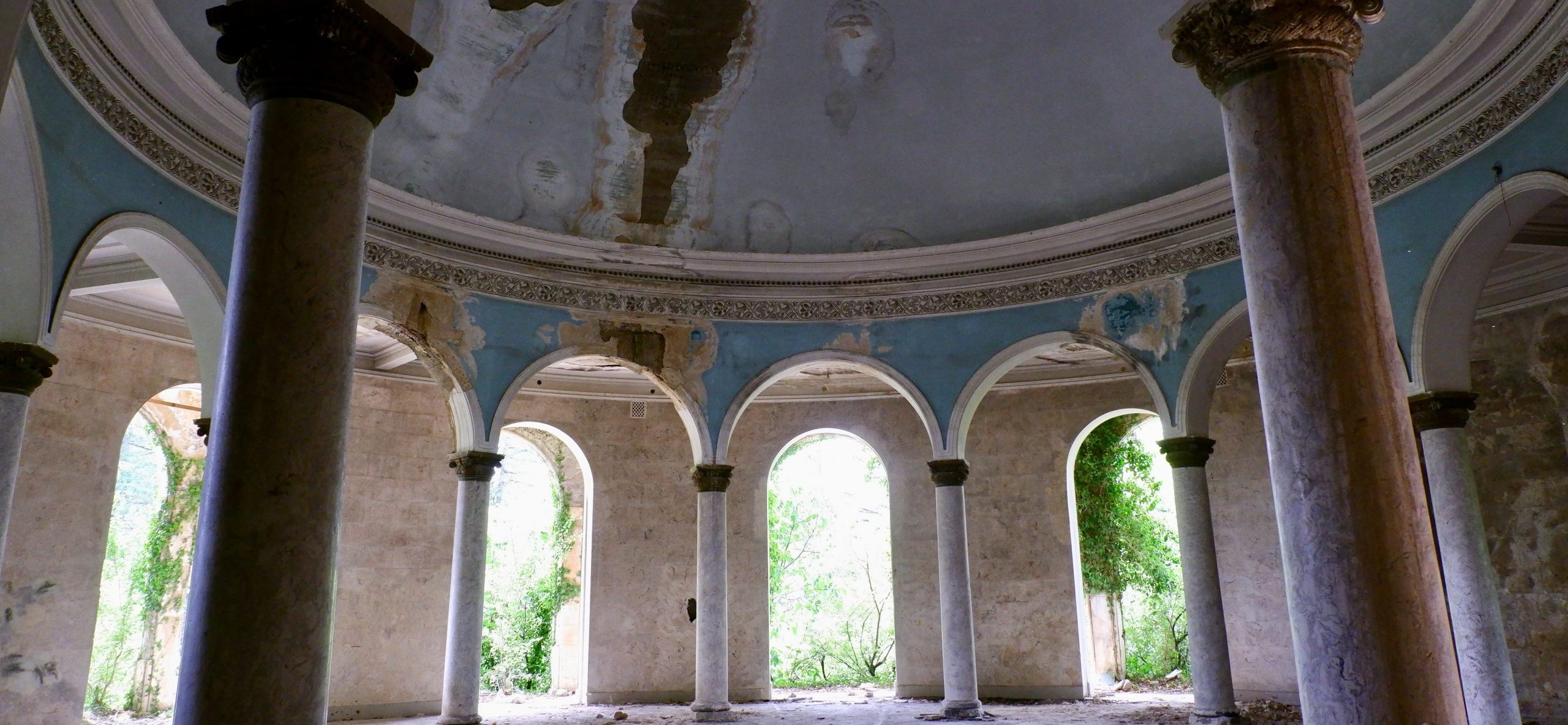
Tbilisi
Tbilisi is the capital and only city in Georgia with over a million inhabitants. In the first phase of integration into Russia at the beginning of the 19th century, much was “Russified”, but Georgia was also opened up to Europe. At that time, Tbilisi became the “Paris of the East”. Elegant palaces, hotels, residential buildings and museums were built in the style of classicism, baroque and later art nouveau. The old splendour can still be admired in the large old town. Although a lot has fallen into disrepair due to lack of money and is also uninhabited or even demolished and replaced, there is still an incredible amount to discover. An almost endless abundance of architectural details and designs delight the eye. We recommend guided walks, but definitely also exploring on your own. You can spend hours or even days here and always discover something new.
A special feature of Tbilisi are the apartment buildings with shared balconies/verandas. This gives the neighbourhood a special meaning and you have to get along well when living here. In summer, Tbilisi is very hot. But it is bearable because of the many large trees and shady houses. Besides this very special old town, Tbilisi has a lot more to offer in terms of sightseeing: Cathedrals, sulphur baths, the Rustaveli Boulevard with the Peace Square, the ruins of the Narikala Fortress (a particularly beautiful view of the city in the evening), the large Botanical Garden, many parks, tasteful restaurants, and a large number of restaurants.
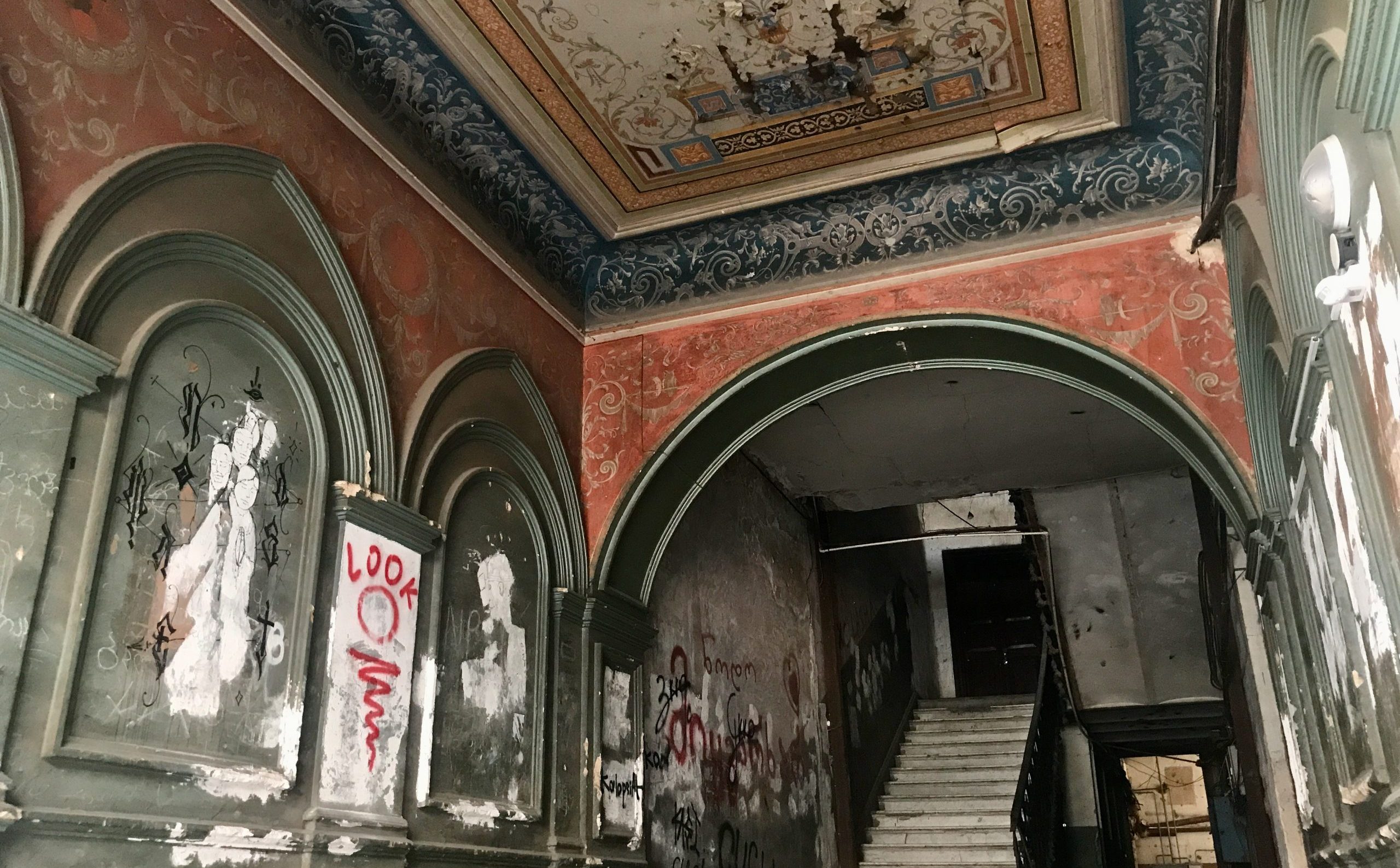
On the Road
The most comfortable way is, of course, an (off-road) car with driver, which will take you to the remotest corners of Georgia. The road conditions are good overland, to the mountain villages sometimes rather challenging. Getting around by public transport is exciting and cheap. For overland routes, there are marshrutkas (minibuses). They tend to run at fixed times, but often only start when even the last seat is occupied. Together with the guide, however, we recommend travelling at least one stretch by public transport.
There are also some train routes in Georgia. One travels very comfortably, cheaply and rather leisurely, all in all an interesting travel experience. If you also want to go to Armenia, we definitely recommend the night train – it’s hard to travel more comfortably.
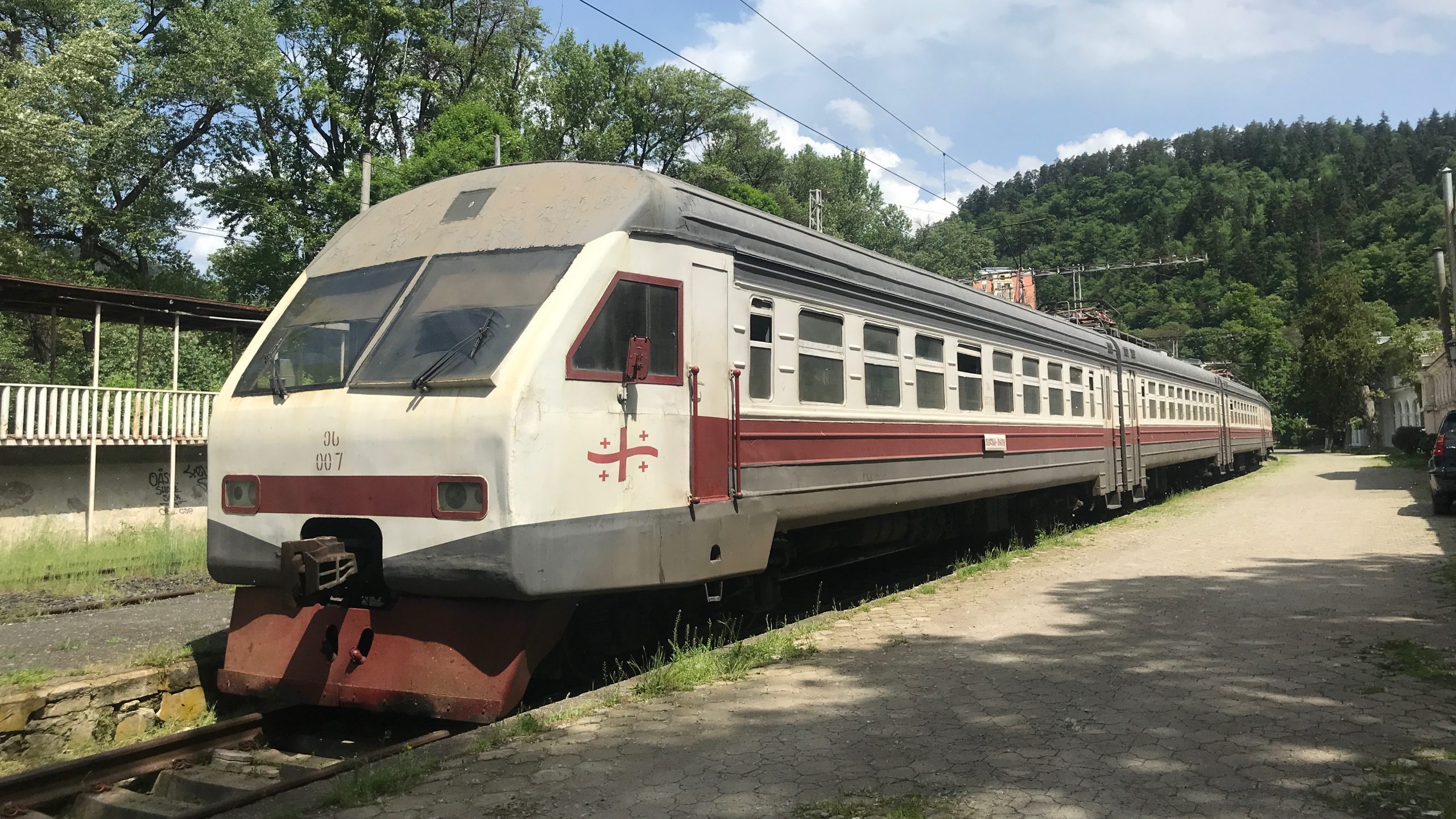
Dogs
We don’t want to hide the fact that there is a problem in Georgia – but it is manageable! And that is dogs. Only one type of dog is a problem, another is not. There are a lot of dogs, even abandoned ones. They like to look for (human) company, sometimes over long distances, sometimes even over several days. You can meet them in villages or in hiking areas like Svaneti (the one in the picture accompanied us for several kilometres in Tbilisi). The problematic dogs for travellers are the Caucasian shepherd dogs, which either guard (sheep) flocks or homesteads. If a shepherd notices this, he often restrains them so that they remain peaceful. But if you enter their territory unnoticed, they will pounce on you barking aggressively and wanting to bite. Then you have to react and make the dog(s) understand that a confrontation could end badly for them.
There are three points that are important:
1. do not hike alone (which happens automatically with us, as you go with a guide).
2. take sticks with you (if you hold them up the dog will think you are huge)
3. do a behavioural training beforehand (this is offered by our guide – the more you internalise how to react, the more likely you are to do it – even if the initial physical reaction is different)
Aggressive dogs are encountered with varying frequency in different regions. While there are relatively many of them in Tusheti, in Svaneti there are more aggressive dogs.
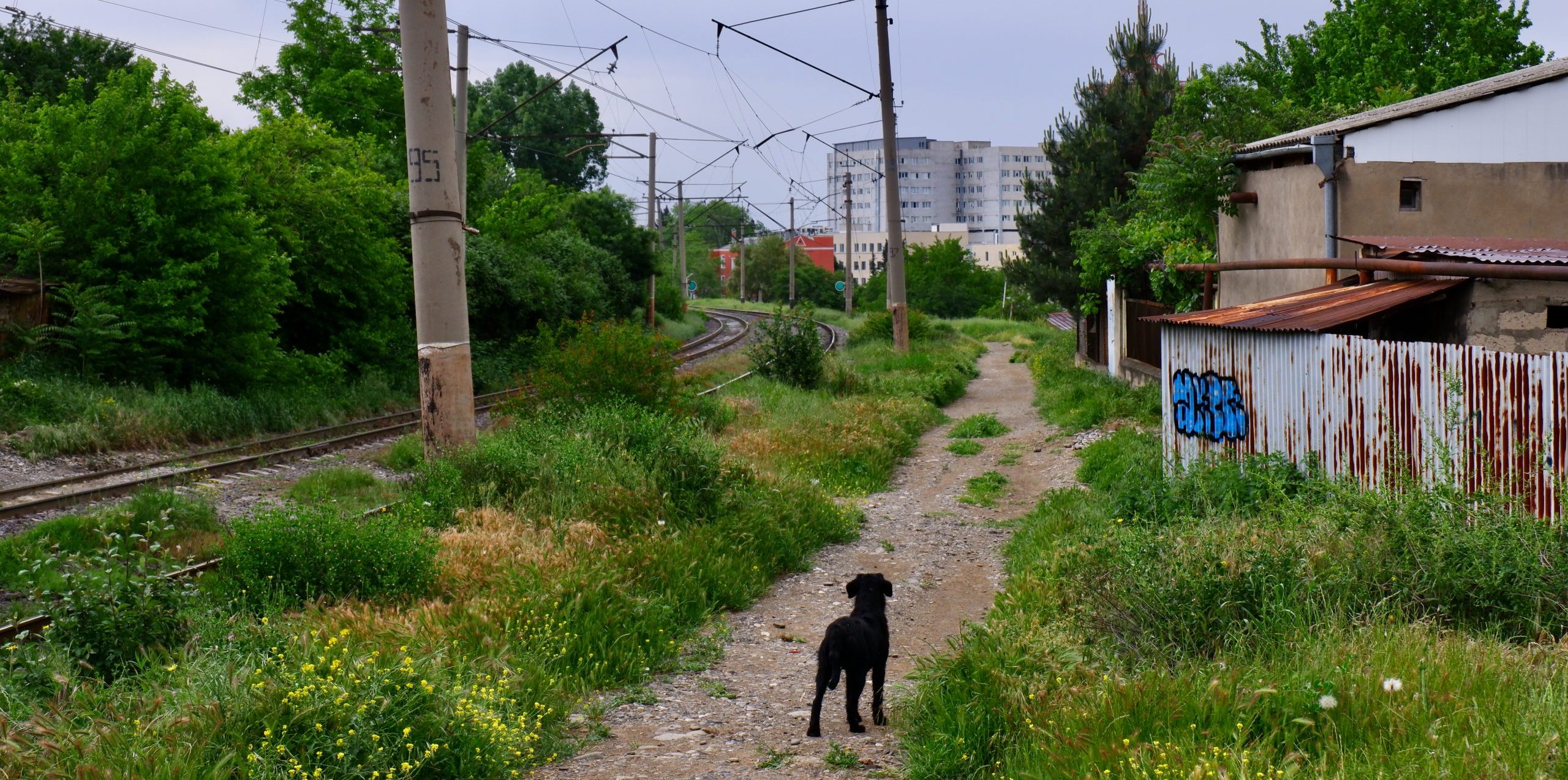
Blog
There is a blog from my own trip in May/June 2023 and thus a good opportunity to get a small impression:
